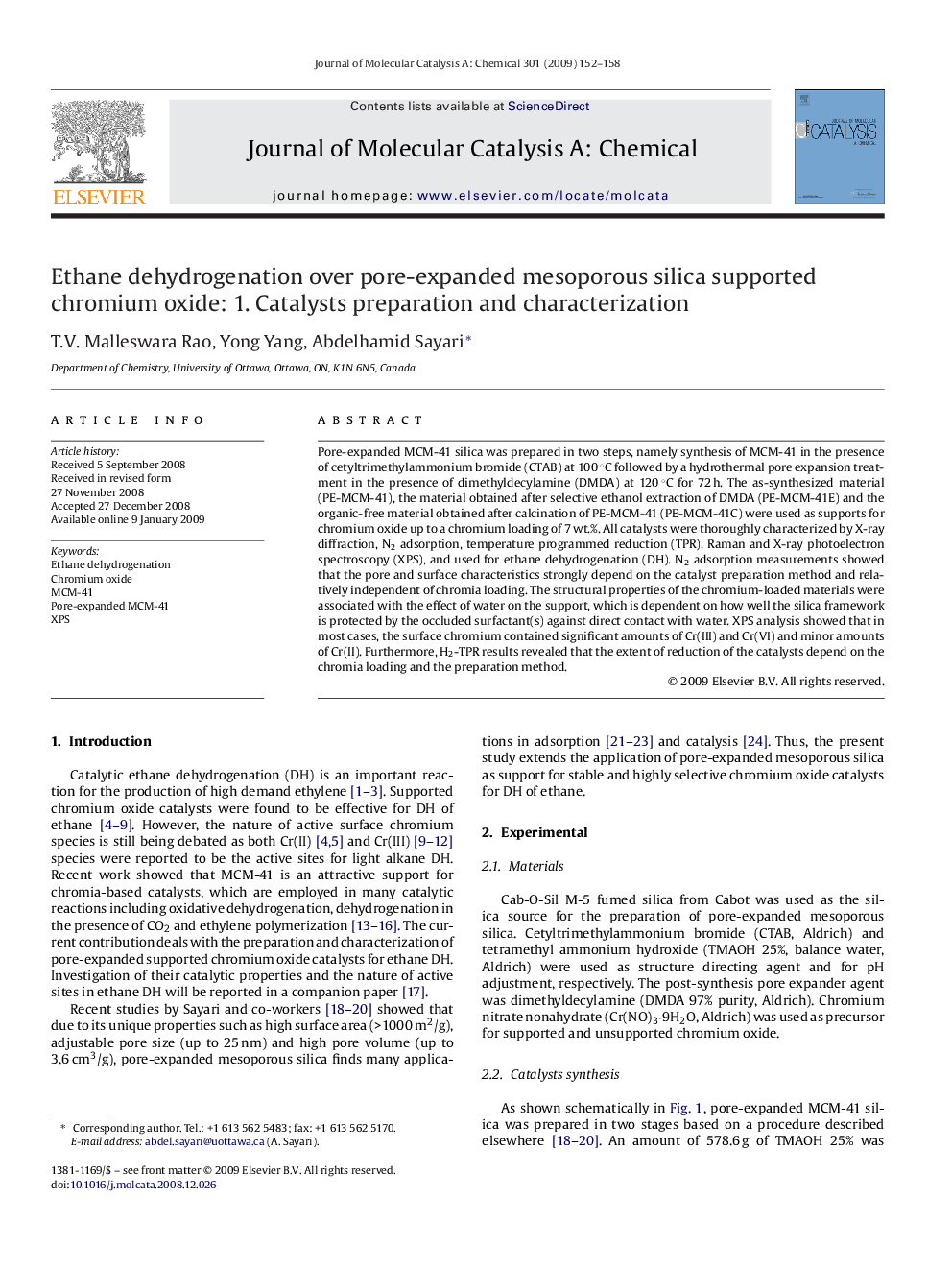| Article ID | Journal | Published Year | Pages | File Type |
|---|---|---|---|---|
| 67262 | Journal of Molecular Catalysis A: Chemical | 2009 | 7 Pages |
Pore-expanded MCM-41 silica was prepared in two steps, namely synthesis of MCM-41 in the presence of cetyltrimethylammonium bromide (CTAB) at 100 °C followed by a hydrothermal pore expansion treatment in the presence of dimethyldecylamine (DMDA) at 120 °C for 72 h. The as-synthesized material (PE-MCM-41), the material obtained after selective ethanol extraction of DMDA (PE-MCM-41E) and the organic-free material obtained after calcination of PE-MCM-41 (PE-MCM-41C) were used as supports for chromium oxide up to a chromium loading of 7 wt.%. All catalysts were thoroughly characterized by X-ray diffraction, N2 adsorption, temperature programmed reduction (TPR), Raman and X-ray photoelectron spectroscopy (XPS), and used for ethane dehydrogenation (DH). N2 adsorption measurements showed that the pore and surface characteristics strongly depend on the catalyst preparation method and relatively independent of chromia loading. The structural properties of the chromium-loaded materials were associated with the effect of water on the support, which is dependent on how well the silica framework is protected by the occluded surfactant(s) against direct contact with water. XPS analysis showed that in most cases, the surface chromium contained significant amounts of Cr(III) and Cr(VI) and minor amounts of Cr(II). Furthermore, H2-TPR results revealed that the extent of reduction of the catalysts depend on the chromia loading and the preparation method.
Graphical abstractPore-expanded MCM-41 silica was prepared hydrothermal treatment of as-synthesized MCM-41 in the presence of dimethyldecylamine (DMDA). The as-synthesized material (PE-MCM-41), the DMDA-free (PE-MCM-41E) and the organic-free material (PE-MCM-41C) were used as supports for chromium oxide. The structural properties of the materials were associated with the effect of water during impregnation. A general procedure for the preparation of supported catalysts with large pores, pore volume and surface area has been established.Figure optionsDownload full-size imageDownload as PowerPoint slide
